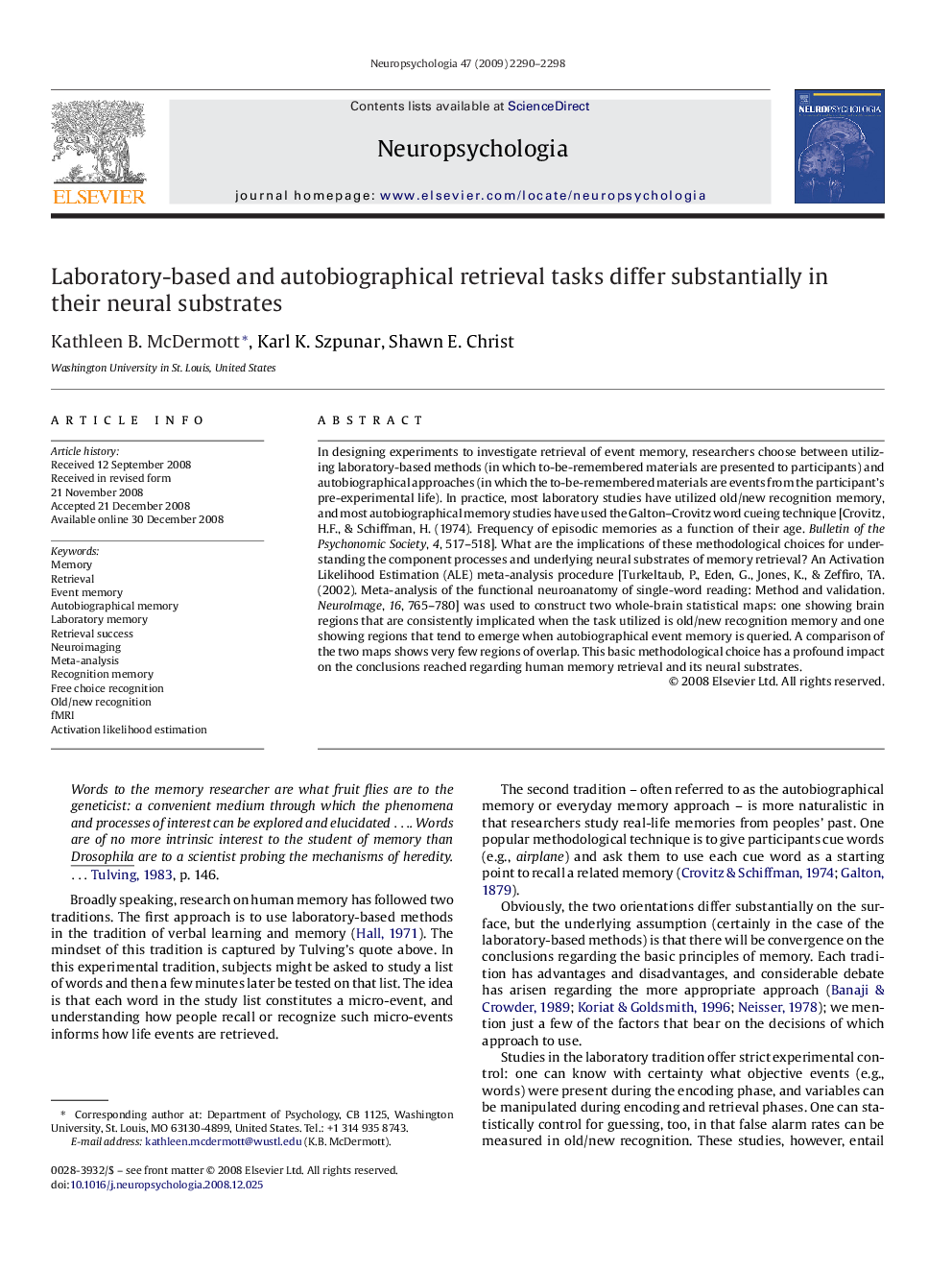| Article ID | Journal | Published Year | Pages | File Type |
|---|---|---|---|---|
| 945152 | Neuropsychologia | 2009 | 9 Pages |
In designing experiments to investigate retrieval of event memory, researchers choose between utilizing laboratory-based methods (in which to-be-remembered materials are presented to participants) and autobiographical approaches (in which the to-be-remembered materials are events from the participant's pre-experimental life). In practice, most laboratory studies have utilized old/new recognition memory, and most autobiographical memory studies have used the Galton–Crovitz word cueing technique [Crovitz, H.F., & Schiffman, H. (1974). Frequency of episodic memories as a function of their age. Bulletin of the Psychonomic Society, 4, 517–518]. What are the implications of these methodological choices for understanding the component processes and underlying neural substrates of memory retrieval? An Activation Likelihood Estimation (ALE) meta-analysis procedure [Turkeltaub, P., Eden, G., Jones, K., & Zeffiro, TA. (2002). Meta-analysis of the functional neuroanatomy of single-word reading: Method and validation. NeuroImage, 16, 765–780] was used to construct two whole-brain statistical maps: one showing brain regions that are consistently implicated when the task utilized is old/new recognition memory and one showing regions that tend to emerge when autobiographical event memory is queried. A comparison of the two maps shows very few regions of overlap. This basic methodological choice has a profound impact on the conclusions reached regarding human memory retrieval and its neural substrates.
